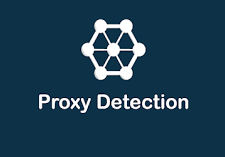In today’s digital landscape, online security is of paramount importance. As businesses and individuals navigate the complexities of the internet, the presence of proxies and their potential impact on cybersecurity cannot be ignored. Proxy detection services have emerged as crucial tools in safeguarding digital assets and sensitive information. In this article, we delve into the significance of proxy detection services and how they enable us to stay ahead of potential threats.
Understanding Proxies and Their Implications
A proxy server acts as an intermediary between a user’s device and the internet and is used for IP proxy check. It masks the user’s IP address, offering anonymity and enabling access to restricted content. While proxies serve legitimate purposes such as enhanced privacy and content access, they can also be exploited for malicious activities. Cybercriminals often employ proxies to mask their identity and location, making it challenging to trace their actions.

The Need for Proxy Detection Services
Proxy detection services play a pivotal role in identifying and mitigating potential threats associated with proxies. These services utilize advanced algorithms and techniques to distinguish between legitimate and malicious proxy usage. Here’s why they are crucial:
- Threat Mitigation: Proxy detection services help detect unauthorized access attempts, fraud, account takeovers, and other malicious activities enabled by proxies.
- Enhanced Security: By identifying proxy users, businesses can prevent unauthorized access to their networks, applications, and sensitive data.
- Fraud Prevention: Many online fraudsters use proxies to conceal their identity during transactions. Proxy detection services enable businesses to flag suspicious transactions and prevent fraudulent activities.
- Content Protection: Content providers can use proxy detection to enforce digital rights management and prevent content piracy.
- Compliance: In some cases, compliance with regional or legal restrictions is necessary. Proxy detection aids in adhering to these regulations by blocking access from restricted regions.
How Proxy Detection Services Work
Proxy detection services utilize a combination of methods to identify proxies:
- IP Analysis: These services analyze IP addresses to determine whether they belong to known proxy server ranges.
- Behavioral Analysis: By analyzing user behavior, including browsing patterns and interaction with websites, proxy detection services can spot anomalies associated with proxy usage.
- Device Fingerprinting: Fingerprinting techniques identify specific characteristics of devices, making it possible to recognize proxies that share similar device attributes.
- Data Enrichment: Proxy detection services may use third-party data sources to enrich their databases and improve accuracy.
Staying Ahead of Potential Threats
To effectively stay ahead of potential threats, consider the following steps:
- Choose a Reliable Proxy Detection Service: Opt for a service that offers a high accuracy rate and is updated regularly to account for emerging proxy services.
- Implement Real-Time Detection: Real-time detection ensures that potential threats are identified and addressed promptly.
- Integration with Security Systems: Integrate proxy detection services with existing security systems to create a comprehensive defense mechanism.
- Regular Review and Updates: As proxy technologies evolve, stay informed about new types of proxies and update your detection methods accordingly.
Effective proxy detection services are essential in maintaining a secure online environment. By accurately identifying proxy usage, businesses and individuals can prevent unauthorized access, fraud, and other malicious activities. As cyber threats continue to evolve, staying ahead of potential dangers requires a proactive approach that leverages advanced proxy detection techniques. Protecting sensitive data, digital assets, and user privacy hinges on the ability to detect and address proxy-related threats effectively.
